RFPs remain the primary approach used by universities to seek and appoint an experienced digital design partner for a website re-development.
With the right content and approach, it's a great way to bring attention to the project, spread the news that you're looking to find a digital design agency and find a partner with good capability and skills alignment.
But the RFP itself can go awry in a number of ways that can be harmful to the project, alienate capable digital agencies, or worse still lead to an inappropriate hire.
Following our article on the do's and dont's of recruiting a digital design partner, we've tapped into the experience of our partners again to uncover the specifics of what you should include in your RFP briefing document and the questions that will help you find the agency with the best fit for your project.

Taking a good RFP and making it great
A good RFP is essentially a detailed project brief that will answer all the queries interested digital agencies will have upfront, reducing the back and forth typical of many tender processes.
The best RFPs, however, have a few additional ingredients we want to mention.
Firstly, there is some personality and energy to them that indicates that this could be a project that would be worth fighting for.
Secondly, the brief should demonstrate ambition and get across how the website redevelopment fits into the wider strategic and digital context for the institution.
And thirdly, there should be a few clues in there that indicates that, although the project team has developed a tight brief, there is scope for an external agency to bring their creativity and ideas to the table.
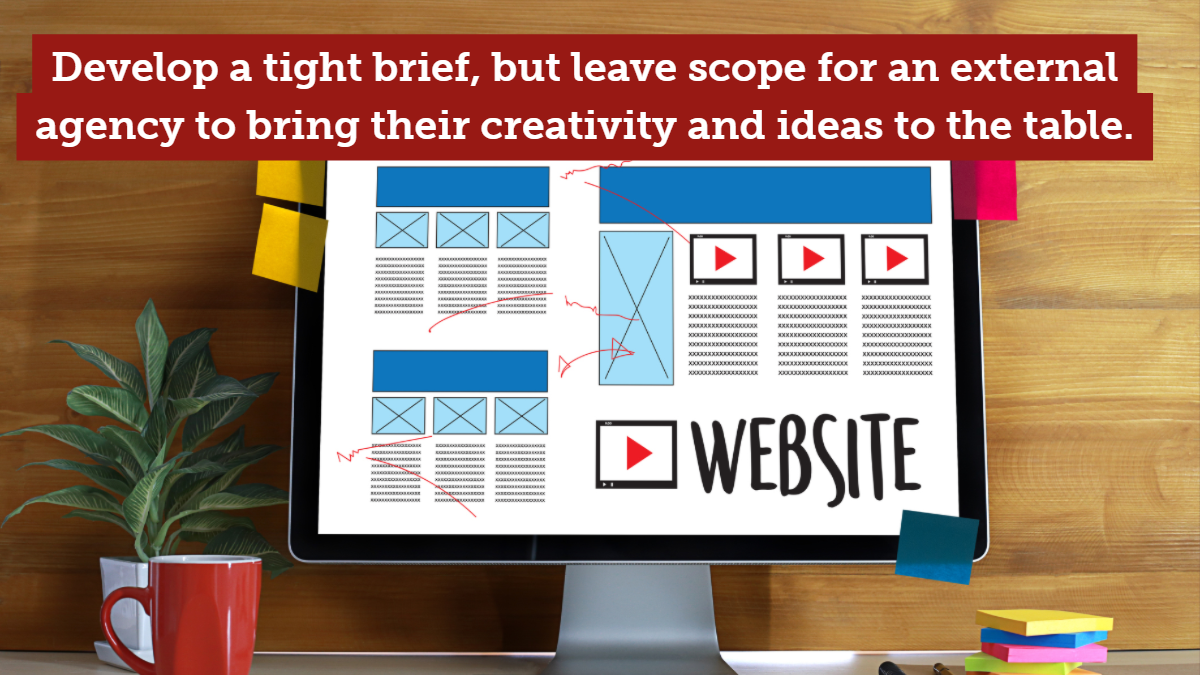
What should institutions include in the RFP?
The project description
The background information should outline the objectives for the project, how it fits into the wider digital and strategic context and why you're seeking to appoint an external digital design partner.
And it can be useful to describe the personality, values and unique differentials of the university so design partners can begin to understand how they could work in the context of the institution.
This is also a good time to explain the history of the website and the problems with the current site you're looking to overcome.
Agencies considering submitting a tender will benefit from seeing the outcomes from work undertaken to date such as stakeholder engagement activity, user persona development, content analyses or on-site performance assessments.
Any work which is still underway at the time of the tender exercise and impacts the project should also be outlined here. Examples include brand re-development exercises, content projects, the rationalization of university websites, or the re-platforming to a new Content Management System. You should include an explanation of the timescales and how these initiatives interplay with the website re-design project.
And agencies will be interested to know what roles the project steering group is made up of, how involved other stakeholder groups are in the project, and who the decision-makers are.
While the RFP should mostly get down to business and communicate these basics, a well-written opening statement will also subtly communicate what you'll be like to work with.
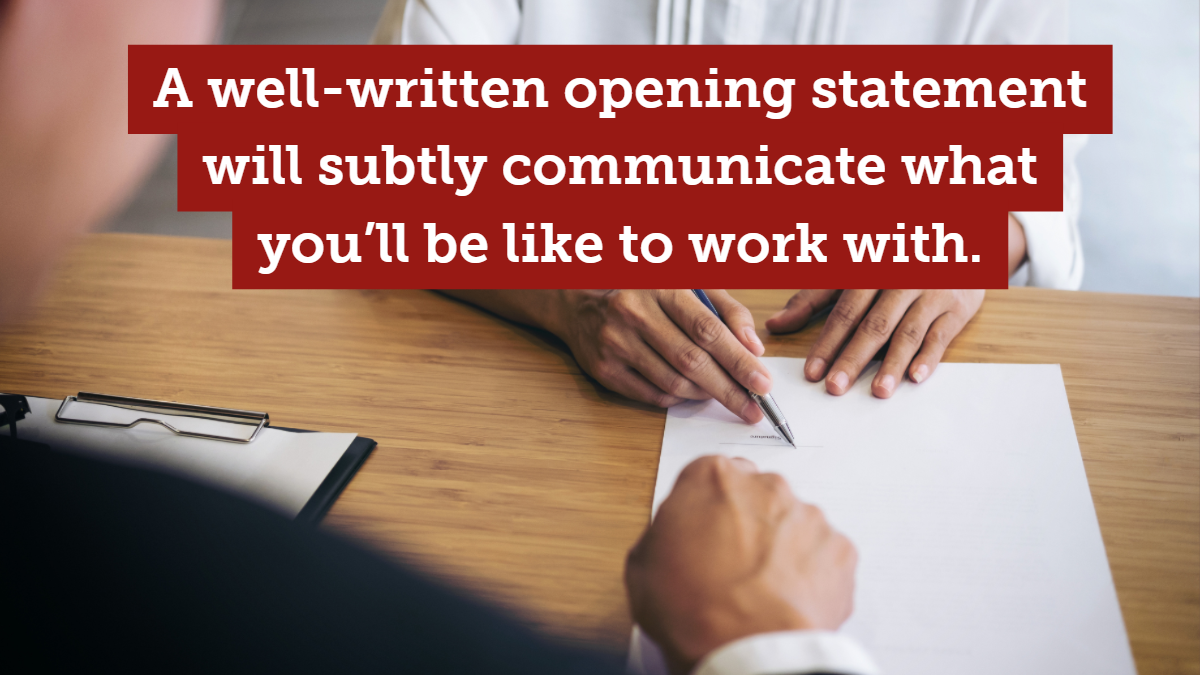
The project parameters
This section of the brief gets into your specific requirements for the project.
Some technical information will be required but if the tender does not cover the platform implementation then a full breakdown of the technical requirements would be unnecessary for the digital design partner.
If you have any hard parameters around time, technology or budget, it's beneficial to be as upfront about these as possible and provide a rationale for the decisions.
The next set of information is what many agencies will jump to, namely the workstreams for the project. Many re-design projects include the following phases of activity.
Discovery
This could include research and analysis, site assessments, stakeholder engagement activity, persona and user journey development.
Design
This will likely require information architecture (wireframe development), template designs or the creation of a component library, and prototypes. State the format (Photoshop, Sketch, other) here if you have an internal team who will be building further on the designs after the completion of the project.
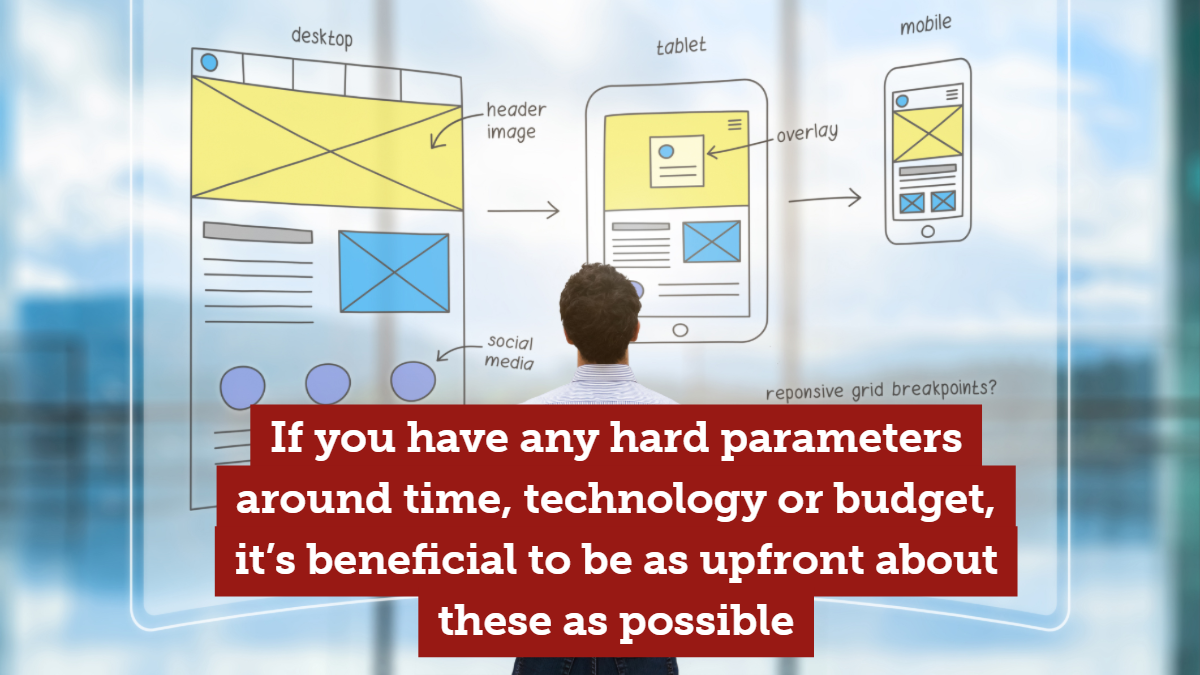
Template development
This typically involves the front end development of design templates and components, cross-browser testing and supply for integration with the Content Management System. Here is a good place to establish any coding standards you have for the project particularly referencing specific frameworks to be used.
Testing
This could be left open to the interpretation and suggestions of the digital design partner or specified in detail upfront by the institution.
Most creative agencies will use the information in this section to estimate the time required for each phase of the project and the costs by multiplying them by their hourly rates. The more accurately they're able to do this, the more specific the cost submissions will be.
The budget
There may be a temptation to hide the budget details to achieve the most economically beneficial proposals but this is counterintuitive.
Agencies will work hard to deliver value for money anyway, so setting out a specific budget or a budget range is vital for the majority of projects. It enables agencies to decide if they are actually able to deliver the project within the funds available. And there are lots of ways to achieve your goals, some big and expensive and some more simple, so a defined budget helps agencies to tailor their approach appropriately to deliver the phases of the project within the specified costs.
What is perhaps more vital, however, is stating clearly what budget is available for the initial project and the preferred payment schedule, and the budget available for ongoing design support (retainer) and the period of time this covers. Many tenders still leave this open to interpretation which can cause problems.
The tender process
Agencies will understandably be seeking clarity on the process, the criteria for selection, the required format for submissions and timescales for the exercise.
Providing the documents and dates in a simple format will be welcome by agencies to avoid any confusion, and whether there is any need for creative work in the tender or if example case studies are sufficient.
There are of course numerous other pieces of information you could share - examples of websites your team likes, proposed site maps and navigation ideas, to name just a few. But for the majority of digital design tenders, these are nice to haves rather than strictly necessary.
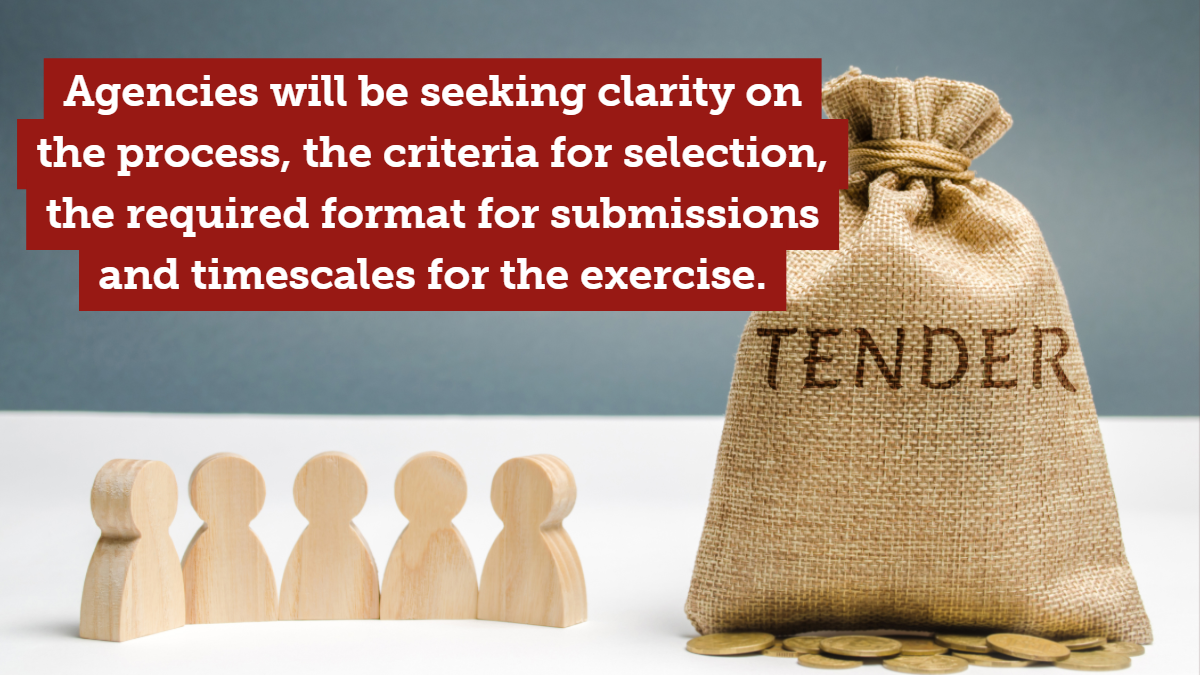
What questions should institutions include in the RFP?
There are numerous questions you could ask, but beyond the standard experience details what are the qualitative questions that will enable you to really identify a great digital design partner?
Here are some examples that we've seen in previous RFPs that help to differentiate between digital design agencies.
- Outline your understanding of our unique university positioning and the main ways the website you design will transform our digital impact.
- Provide evidence of projects with a similar scale/scope and the outcomes achieved.
- Explain how your approach and methodology will successfully deliver the project and how the outcomes can be measured.
- Describe your experience in interpreting and applying brand guidelines and how you would apply our guidelines to a digital context.
- Demonstrate your experience of leading complex creative digital projects and working with wide-ranging stakeholder groups.
- How will you engage and interface with our digital project team and the wider groups of stakeholders including senior leadership teams involved in the project to ensure everyone feels included and involved.
- Explain how you have broken down barriers and overcome obstacles to keep a large scale digital project moving forward positively.
- Describe how you would go about building the front end of the website so that it can be integrated efficiently with our proposed Content Management System.
- Who are the daily contacts for the project and what communication methods will you use to coordinate the project?
- What level of responsiveness can we expect for work requests after the conclusion of the initial project, how are these organized, and what evidence do you have for retainer response rates?
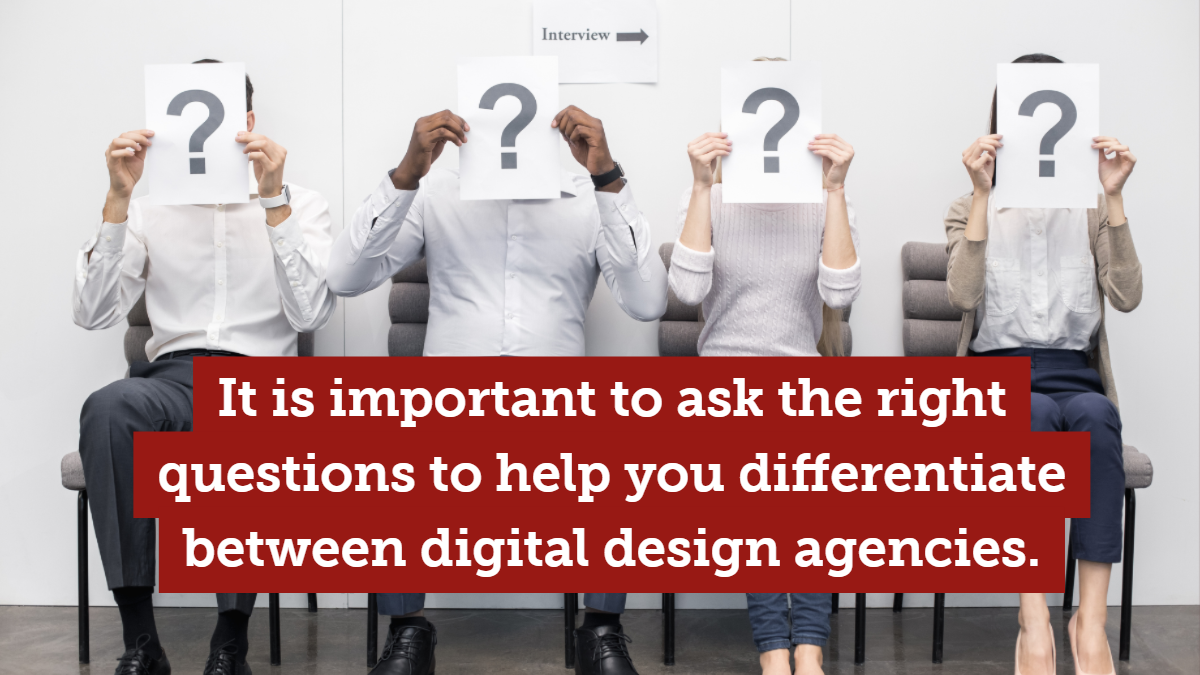
The ingredients of a successful RFP
Running a client-side RFP process for the first time can be a daunting task, and the process can feel long and drawn out.
But if your RFP is well written and the scope is tightly defined you'll experience more efficiency throughout the entire tender process and can expect better outcomes.
And by following the best practice from previous tender exercises and asking the right questions, you should give yourself the best possible chance of finding a digital design partner with the chemistry to work well with your team and the skillset and experience to transform your website.
What RFP questions do you think provide the greatest indication of capability for a project or alignment with the culture of your team? We'd love to hear.

:format()//media/RFP-Blog--Rq.png)